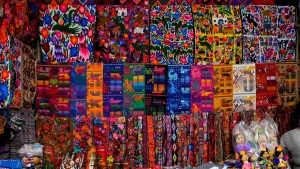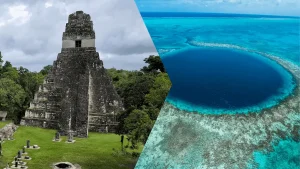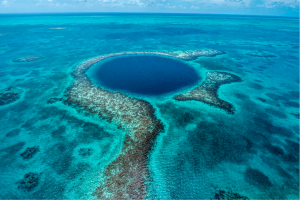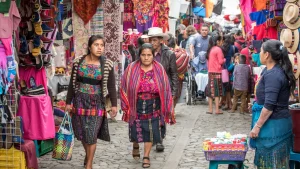The Nahuales are legendary creatures with a strong hold on Mesoamerican culture. Shrouded in mystery and reverence, their figure has persisted over the ages, being handed down from one generation to the next.
In Nahuatl, “nahualli” means “what is my clothing” or “my skin.” This is where the word “nahual” originates. It describes a person’s capacity to change into an animal and build a physical and spiritual connection with that being.
Oral histories and codices provide proof that Nahuales were believed in pre-Hispanic periods. Every individual is thought to have a nahual, an animal spirit, that follows and guards them all their lives.
In Guatemala, the belief in nahuales is particularly rooted in Mayan communities, where it is known as “nawal.”. This figure is not only part of mythology but also has very important spiritual and cultural relevance in the daily lives of many people.
The nawal is a symbol of the vitality and spirit of nature and is much more than just a basic animal in the Mayan worldview.
It is thought that every individual is born with a nawal that follows and guards them throughout their lives. This book has a lot to do with the character’s personality and fate. Dreams, animal affinities, and intuitive perceptions are just a few of the ways that the link to the nawal can show up. Nawals can represent a variety of animals, each with its own significance and symbolism, including eagles, coyotes, and jaguars. For instance, the eagle is a symbol of freedom and vision, while the jaguar is a symbol of strength and power. Apart from animals, other natural elements like the wind and mountains are also thought to have their own nawal.
The ajq’ijab’ (Mayan priests) in some communities are well-versed in the nawals and are able to decipher their significance in reference to individuals. The nawals and the dates of the Mayan calendar are closely associated, and it is thought that every day has its own spirit and energy.
Some people may even be able to change into their nahual because they have a strong connection to it.
The nawal figure is used in many Guatemalan cultural forms, including literature, art, and oral tradition. This concept remains an important part of the cultural identity of many Guatemalan Mayan peoples. Some cultures believe that the nahual appears through dreams or natural cues. There are several different types of Nahuales, some with good intentions and some with bad ones.
Although modernity has transformed many traditions, the belief in the nahuales is still alive in various indigenous communities. Their figure continues to inspire respect and fascination, reminding us of the deep connection between human beings and nature.







